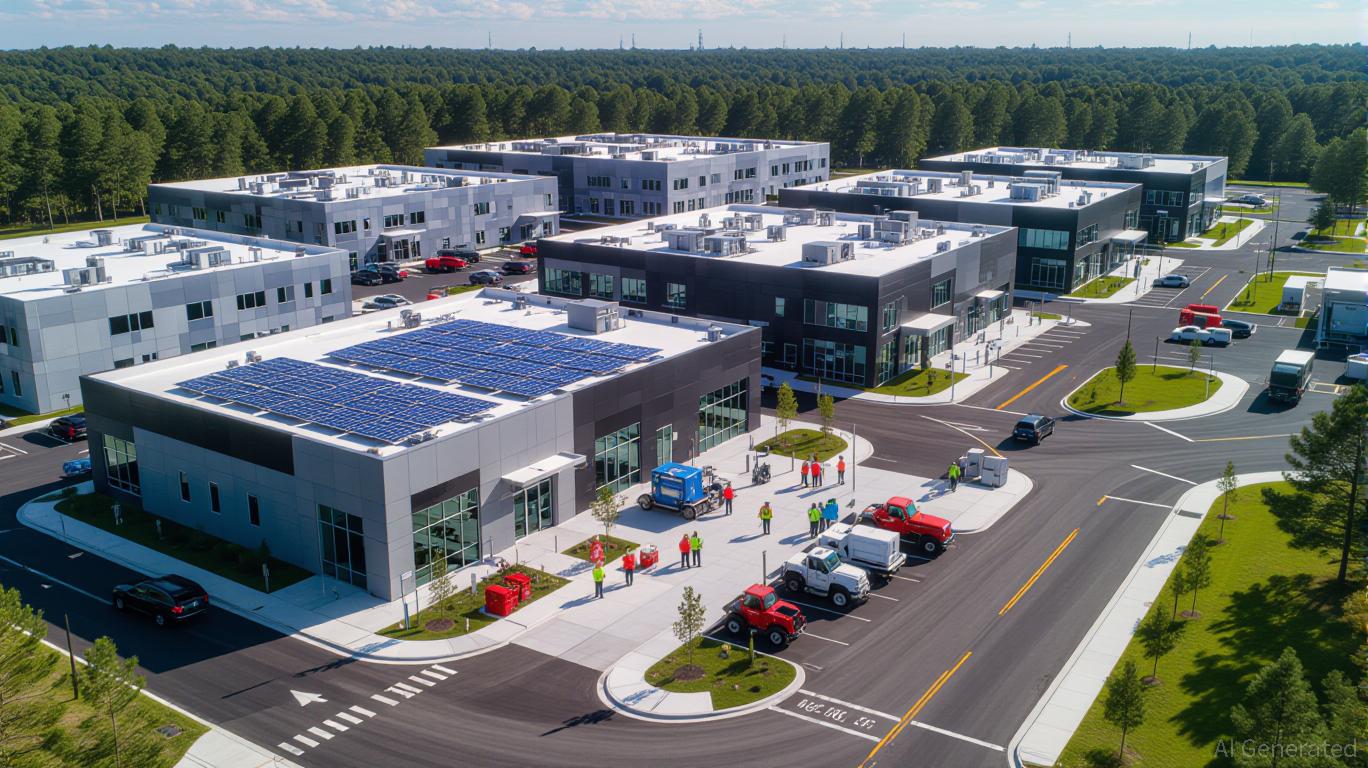The Transformation of Webster, NY: Targeted Property and Infrastructure Initiatives After the Xerox Era
- Webster , NY, secured a $9.8M FAST NY grant to transform the former Xerox campus into a shovel-ready industrial hub, part of Governor Hochul’s upstate revitalization strategy. - Infrastructure upgrades, including road and sewer improvements, aim to attract advanced manufacturing and logistics firms by reducing development risks and costs. - The Xerox campus redevelopment includes mixed-use projects, projected to create 250 jobs and boost property values through residential and commercial integration. - W
Webster, NY: A Model for Industrial Renewal Through Strategic Infrastructure
Webster, New York, is undergoing a remarkable transformation into a center for advanced manufacturing and industrial real estate, offering a prime example of how targeted infrastructure investment can drive economic resurgence. Central to this evolution is a $9.8 million FAST NY Shovel-Ready Grant awarded in 2025, which is being used to redevelop the former Xerox Wilson Campus and neighboring properties into a state-of-the-art industrial hub. This initiative, part of Governor Kathy Hochul’s broader strategy for upstate New York, highlights the crucial role of infrastructure preparedness in attracting top-tier manufacturing and logistics companies.
FAST NY Grant: Laying the Groundwork for Growth
The FAST NY program accelerates development by pre-approving key infrastructure improvements, positioning Webster as a leader in post-industrial renewal. The $9.8 million grant is funding essential upgrades at the Xerox campus, such as new roadways, expanded sewer systems, and comprehensive electrical planning. These enhancements are more than just technical updates—they are strategic investments that convert a 300-acre brownfield into a ready-to-develop site suitable for advanced manufacturing, semiconductor fabrication, and clean energy projects. Additionally, the grant is supporting infrastructure at the NEAT (Northeast Area Technology) and fairlife sites, broadening Webster’s industrial landscape.

By focusing on reducing development risks through pre-approved infrastructure, the program addresses national challenges such as escalating construction expenses and slower leasing activity due to rising interest rates. Streamlined permitting and infrastructure readiness mean developers can move projects forward more quickly and with less capital, aligning with the state’s vision of a resilient economic ecosystem where public investment paves the way for private sector growth and job creation.
Xerox Campus: Pioneering the Bluefield Approach
Once emblematic of industrial decline, the Xerox Wilson Campus is now a showcase for the “bluefield” model—a blend of industrial and residential development that supports sustainable progress. The site’s redevelopment includes not only infrastructure improvements but also an emphasis on walkability and mixed-use opportunities. The demolition of the 600 Ridge Road facility, completed by the end of 2025, is making room for a vibrant mix of residential, retail, and commercial spaces. Supported by state initiatives like the Brownfield Opportunity Area program, this approach overcomes the limitations of traditional industrial parks by fostering communities where employees can live close to their workplaces, improving both workforce stability and quality of life.
The economic benefits are already evident. By 2026, the Xerox campus is expected to offer over one million square feet of industrial space and attract major projects such as the $650 million fairlife® dairy plant, which will generate 250 new jobs. Meanwhile, the Village of Webster’s $4.5 million NY Forward Community Revitalization Program is breathing new life into the downtown business district, and an additional $500,000 in transportation funding is enhancing bike and pedestrian access to redevelopment areas. These coordinated investments are anticipated to boost property values and draw further private investment, especially in sectors like e-commerce logistics and renewable energy.
Statewide Impact: Setting a Precedent for Upstate New York
Webster’s achievements are part of a broader movement transforming industrial real estate across upstate New York. Since 2022, the FAST NY program has supported 37 projects statewide, upgrading nearly 7,700 acres and attracting over $283 million in private investment. Sites like the Triangle Site in Oneida County, which received $32 million to support semiconductor supply chain businesses, reflect a similar focus on high-tech manufacturing. Collectively, these projects demonstrate how infrastructure readiness can lower the risks of industrial development, making upstate New York a strong competitor to coastal markets.
Webster’s strategic location—close to Buffalo’s port and rail networks—further enhances its attractiveness. With industrial vacancy rates in Western New York dropping to as low as 2%, compared to the national average of 7.3%, the region is increasingly appealing to companies seeking cost-effective alternatives to pricier coastal cities. The Xerox campus exemplifies the advantages of shovel-ready sites, which offer shorter development timelines and lower upfront costs. Developers are also gravitating toward smaller, multi-tenant industrial buildings that provide stable returns, a trend that fits well with Webster’s modular infrastructure upgrades.
Overcoming Obstacles and Looking Ahead
Despite these positive developments, challenges remain. The national industrial real estate sector continues to face higher construction costs and slower leasing activity, largely due to increased interest rates. Nevertheless, state-supported infrastructure investments and Webster’s advantageous location help the town remain resilient. The alignment of infrastructure completion in 2025 and full site readiness by 2026 creates a timely opportunity for investment, particularly in fields like semiconductor manufacturing and renewable energy, where robust supply chains are essential.
Webster’s journey offers valuable insights for other communities and investors seeking to revitalize post-industrial areas. By emphasizing infrastructure preparedness, encouraging collaboration between public and private sectors, and integrating residential and commercial development, Webster is not only rejuvenating its industrial base but also establishing a sustainable blueprint for future growth. As upstate New York continues to attract high-value industries, Webster’s experience is poised to influence the next wave of industrial real estate investment throughout the region.
Disclaimer: The content of this article solely reflects the author's opinion and does not represent the platform in any capacity. This article is not intended to serve as a reference for making investment decisions.
You may also like
Pi Network (PI) Retesting Its Key Breakout – Could a Rebound Be Near?

Bitcoin News Update: Bitcoin Drops 30%, Revealing 'Panda Phase'—A Mild Bear Market Lacking a Definite Bottom
- Bitcoin fell 30% to $87,080, its steepest two-month drop since 2022, driven by ETF outflows, leverage liquidations, and stablecoin declines. - Institutional confidence waned as asset managers paused accumulation, while retail investors exited en masse, worsening liquidity and market sentiment. - The Crypto Fear & Greed Index hit record lows at 15, reflecting panic amid Fed policy uncertainty and Bitcoin's 0.72 correlation with the Nasdaq 100. - Deribit's $1.76B call condor bet hints at cautious optimism,
Lowe's CEO's Approach to DEI: Embedding Diversity into Operations Rather Than Symbolic Actions
- Marvin Ellison, former Target part-timer and one of eight Black Fortune 500 CEOs, led Lowe's to $20.81B Q3 revenue through operational discipline and AI-driven innovation. - His Total Home strategy integrating services and store productivity, plus 50+ AI models for inventory/price optimization, drives growth amid retail challenges. - Ellison prioritizes action-based DEI reforms like leadership-focused hiring over credentials, rejecting performative gestures post-2020 George Floyd protests. - Despite rais

Bitcoin News Update: Unveiling Layered Risks as Connections Between Crypto and Traditional Finance Deepen
- Bybit temporarily halted CME-linked crypto futures trading after CME Globex disruptions, exposing vulnerabilities in centralized infrastructure linking traditional and digital markets. - CME Group faced scrutiny for technical glitches suspending Bitcoin futures, despite record 9% monthly growth in crypto derivatives volume and 132% YoY expansion in notional value. - Analysts highlight cascading risks from centralized system failures, urging diversified risk strategies as institutional adoption of 24/7 cr
